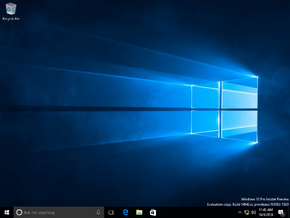Windows 10 build 14942
| Build of Windows 10 Creators Update | |
 | |
| OS family | Windows 10 (NT 10.0) |
|---|---|
| Version number | 10.0 |
| Build number | 14942 |
| Build revision | 1000 |
| Architecture | x86, x64 |
| Build lab | rs_prerelease |
| Compiled on | 2016-10-03 |
| Expiration date | |
| Timebomb | 2017-05-01 (+210 days) |
| SKUs | |
| Home (Single Language) Pro Education Enterprise | |
| Product key | |
| Use a Windows 10 Retail serial | |
| About dialog | |
Windows 10 build 14942 is the seventh Insider Preview build of Windows 10 Creators Update, which was released to Windows Insiders in the Fast ring on 7 October 2016.
New features and changes[edit | edit source]
Setup[edit | edit source]
The uninstalled app will no longer be reinstalled if a sysadmin has de-provisioned an app from the system image.
User interface[edit | edit source]
Settings[edit | edit source]
A new Windows Update icon has been introduced.
Narrator[edit | edit source]
Form field navigation has been added to Narrator.
Miscellaneous[edit | edit source]
Refinements have been made to gesture and click detection on precision touchpads.
Bugs and quirks[edit | edit source]
- Due to a then-recent platform change, Microsoft Edge may crash after opening, or when typing in the address bar or upon trying to open a new tab.
- Touch scrolling is too sensitive in some apps, such as Microsoft Edge.
- Service host separation may make the IIS World Wide Web Publishing Service (W3Svc) unable to start successfully.



